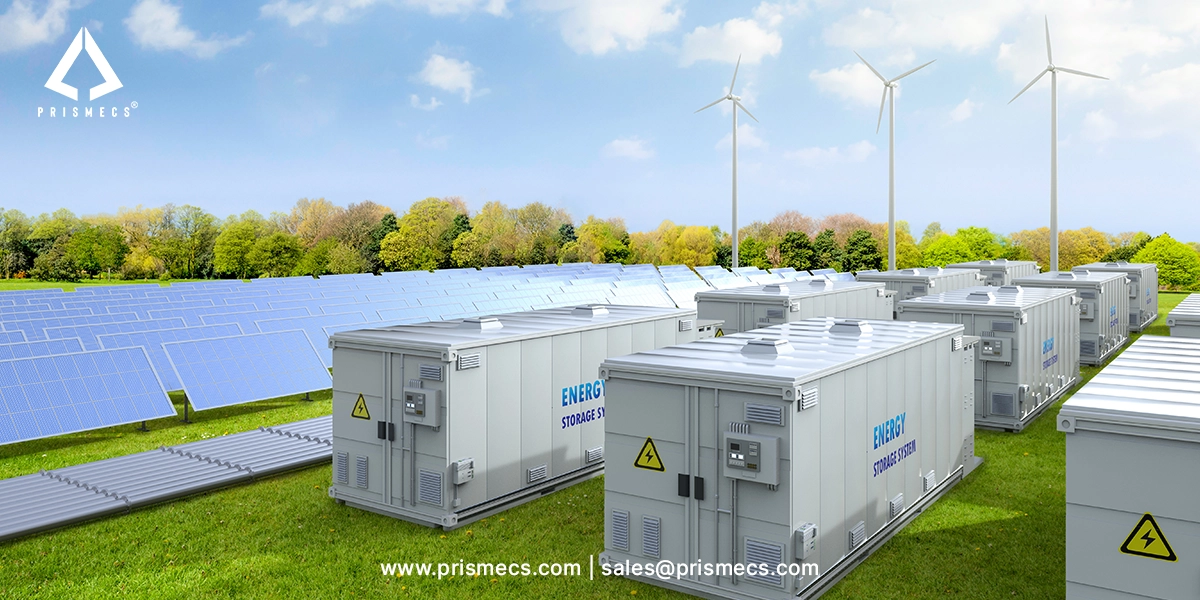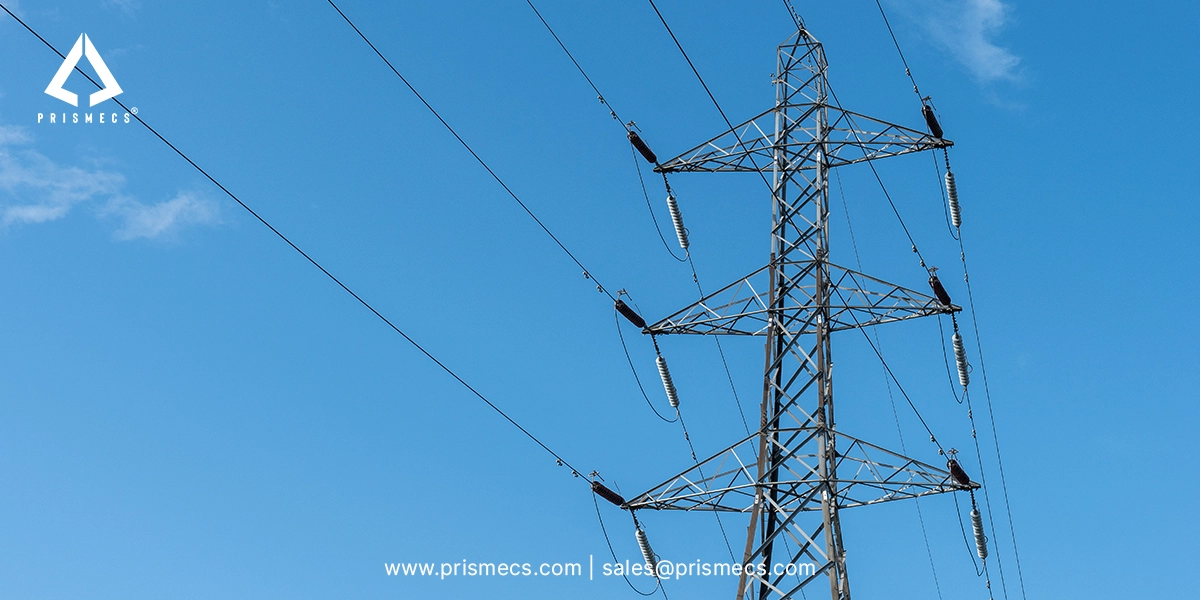
As the global demand for energy increases, Independent Power Producers (IPPs) play a key role in supplying cleaner energy. They contribute significantly by delivering more environmentally friendly electricity to fulfill modern energy needs. In contrast to a traditional utility generator, IPPs are independent of state-controlled public utilities. This independence allows them to share new ideas, use cleaner technologies, and explore renewable sources like wind energy. IPPs also sell energy made from renewable resources directly to the electricity market, creating a steady revenue stream.
IPPs in the Electricity Market
Independent Power Producers (IPPs) have changed the power generation field by contributing to a more competitive electricity market. Their business models focus on renewable energy, and IPPs generate successful power purchase agreements.
IPPs Energy Solutions
IPPs provide flexible and sustainable energy solutions. They serve communities, industries, and electrical utilities worldwide. Their services extend to various sectors while ensuring that the amount of electric supply meets demand efficiently.
Understanding Independent Power Producers
An Independent Power Producer (IPP) is a private company that produces electricity. Utilities, businesses, or users purchase the generated power. These producers operate under various contracts, which companies commercially know as Power Purchase Agreements (PPAs).
How IPPs Differ from Utilities
IPPs differ from utilities in their operational model. They connect their power plant to the electricity grid wholesale to transmission companies. This IPP scheme has relieved them of some requirements placed on traditional utilities when they produce electricity. By doing so, they also diversify the sources of energy that contribute significantly to the grid.
Independent Power Producer Market Forecast to 2032
IPP focuses on renewable energy development, paving the way for sustainable energy. Their future is cleaner and greener. The global IPP and Energy Traders market will grow significantly from 2024 to 2032. We project the market to expand at an approximate 8% CAGR during this period. Industry growth depends on companies adopting new business strategies. Analysts expect the IPP market to grow to USD 2,089,000.2 million by 2032, with a projected CAGR of 8.06% from 2024 to 2032. IPPs encourage innovation because of their independence.
They can adopt renewable sources like solar, wind, hydropower, and biomass. These producers operate without government funding or grants. IPPs stabilize the energy sector by reducing reliance on fossil fuels. They promote sustainability by adopting renewable energy. IPPs cut carbon emissions, easing the burden on the environment. This effort is crucial in fighting climate change.
Key Business Models of Independent Power Producers
Independent Power Producers adopt several business models to achieve high-level energy production and sales:
Power Purchase Agreements (PPAs)
A PPA is a long-term contract in which the IPP agrees to sell power to a buyer at a pre-approved price. The buyer can be a utility company. This mechanism ensures both parties get what they value most. The IPP secures a predictable income, and the buyer ensures a consistent power supply.
PPAs often support renewable energy projects. They allow IPPs to finance complex infrastructure with long-term income certainty. They guarantee stable returns for the IPP. They ensure buyers receive reliable power for extended periods.
Merchant Power Plants
Merchant power plants sell their production directly to the open market without a contract. IPPs make profits by selling energy at market prices. Electricity prices are sometimes higher during certain periods. In such periods, they earn more by selling at higher prices. Nevertheless, if prices also fluctuate negatively, there are greater risks.
Feed-in Tariffs (FiTs)
Feed-in Tariffs (FiTs) are government subsidies encouraging people to switch to renewable energy sources. IPPs receive a fixed price for the electricity they generate and transfer to the grid. FiTs also create opportunities for IPPs to explore innovative business models. IPPs can earn significant revenue while supporting energy sustainability goals.
The Role of IPPs in the Renewable Energy Landscape
IPPs are driving the shift to renewable energy. Their flexible business models allow investments in advanced technologies, and they utilize renewable resources to their fullest potential. The decentralized structure of IPPs supports distributed energy generation. They deliver power closer to consumption points. This proximity reduces transmission losses effectively.
How IPPs Drive Affordable and Clean Energy Access
IPPs provide renewable energy where utilities face infrastructure or regulatory challenges. Their solutions make energy accessible in difficult areas. IPPs participate in electricity markets and sell power independently. Their involvement increases competition among energy providers. Increased competition lowers energy prices and encourages cleaner technologies. Consumers benefit from cost savings and cleaner energy options. IPPs help achieve greenhouse gas reduction goals.
Benefits of IPPs in the Renewable Energy Sector
The development of sustainable energy through IPP solutions brings about certain benefits that are listed below:
Reduction of Carbon Emissions
IPP mechanisms enable renewable energy sources to replace fossil fuels as the primary energy source. This change directly reduces carbon emissions. The shift from fossil fuels to green electricity includes resources like wind, solar power, and hydropower. This transition lowers greenhouse gas emissions and helps mitigate climate change. IPPs are mobile and quickly adopt renewable resources. They lead other businesses in adopting green energy solutions, accelerating the shift toward renewable energy use across industries.
Enhanced Energy Security
IPPs improve energy security by opening new generation technologies. In other words, they diversify the sources of energy production. While this results in a chain system with a few key facilities, IPPs produce power in a decentralized manner. This creates competition. It disperses energy production resources to different locations and sources. As a result, we fear blackouts less, and villages and factories can rely on a continuous power supply.
Cost-Effective Solutions
Many IPPs apply renewable technology that is flexible enough to scale. In the long run, this allows them to generate electricity at lower costs. It also introduces competition into the electricity market. This decreases consumer prices. PPAs (Power Purchase Agreements) and feed-in tariffs save the IPPs financially, helping them provide competitive prices. The cost of renewable energy continues to go down.
Economic Growth
The increase of the IPP sector is key to the economy. Renewable energy facilities have created more construction, operations, and maintenance jobs. Local economies benefit from these opportunities. This is especially true in areas where IPPs choose solar farms or wind setups.
IPPs, Public Utilities, and the Future of Electricity Markets
As IPPs grow, their interactions with utilities are gradually changing. Conventional utility companies operate centralized power stations that run on fossil fuels. IPPs supply clean energy to the network using advanced renewable energy technologies.
IPPs and Utility Compliance
They help utilities comply with renewable portfolio standards. They also support energy transition initiatives that improve every connected power system. Utilities now collaborate more with IPPs, often procuring renewable power via PPAs.
Clean Energy Access via PPAs
These agreements provide cleaner alternatives for their customers. They bypass the need for utilities to build green infrastructure from scratch. IPPs also coordinate with power marketers to reach wider audiences, selling clean electricity across different regions through transmission lines.
Innovation Through Diverse Energy Sources
The presence of IPPs benefits consumers by creating a more competitive electricity market. They have flexible business models and use multiple energy sources, including solar and wind farms. They also use hybrid battery solutions to support diverse energy needs. This variety encourages utilities to innovate.
Affordable Renewable Energy
IPPs also increase renewable energy offerings, which helps reduce the kilowatt-hour cost for consumers. The competition among companies will lower electricity rates and make sustainable energy available to a larger segment.
Overcoming Challenges in the IPP Sector
Although IPPs have many advantages, they must also deal with issues, including financing and regulatory compliance. Renewable energy facilities are capital-intensive and depend on consistent revenue streams from the electricity produced.
Funding and Regulations
IPPs mostly rely on Power Purchase Agreements or feed-in tariffs to secure funds, which help finance their projects. However, they must comply with the regulatory regime, which can differ significantly between locations. This can create entry barriers in some areas, even when the local power system could benefit from cleaner energy.
Technology and Policies
Technological progress is gradually reducing these problems, and supportive policies for renewables are making a difference. Both governments and private investors now see IPPs as crucial partners. They view IPPs as key to meeting climate change targets, which allows easier access to funds for renewable projects.
IPPs and the Future of Renewable Energy
Independent Power Producers (IPPs) will become more significant in the future as demand for clean energy grows. They provide renewable resources, and the global market demand for them is increasing. Various IPPs are working on hybrid models that combine solar with battery storage, and some combine wind with hydro.
Reliable Renewable Energy
These solutions ensure clean, steady electricity for the power system. They work even when the skies are cloudy or the wind speeds are low. Such breakthroughs help IPPs move in a sustainable direction while ensuring the electricity produced remains reliable and affordable.
Global Energy Stability
This approach supports worldwide carbon neutrality and offers stability to the market. IPPs will function as deep veins in electric networks, delivering energy through transmission lines to different industries.
Powering Energy-Intensive Industries
They will power high-technology data centers and cloud computing facilities, which require vast amounts of electricity to operate. By working with power marketers and utilities, IPPs deliver renewable electricity to businesses. This electricity helps businesses improve environmental performance and reduce carbon emissions effectively. IPPs also lower businesses’ kilowatt-hour consumption costs while meeting operational needs.
Conclusive Remarks
Independent Power Producers (IPPs) are among the most indispensable participants in the renewable energy future. By utilizing renewable energy sources, introducing new business frameworks, and selling power autonomously, IPPs are developing better and cleaner energy generation solutions. Their involvement in electricity markets and partnerships with public utilities is transforming how we generate and consume energy.
Role of IPPs in Sustainable Energy
Independent Power Producers (IPPs) drive the shift to the sustainable energy industry. They are agile, innovative, and tenacious. Their work creates clean energy and introduces competition and market mechanisms.
IPPs’ Impact on Growth and Climate
It inspires local economic growth and supports global climate goals. In the upcoming years, IPPs will still dominate. They will make renewable energy more usable, effective, and far-reaching for both communities and industries worldwide.
Partner with Prismecs for Reliable IPP Solutions in Renewable Energy
Partnering with Prismecs for Independent Power Producer (IPP) solutions means securing a sustainable and reliable energy strategy. We tailor this strategy to your business needs. As a trusted leader in the energy sector, we combine cutting-edge technology and expertise in renewable energy.
Sustainable Power Solutions
We are deeply committed to sustainability. By choosing us, you can access efficient, customized power solutions that reduce your carbon footprint. We also optimize energy use and support your business goals.
Partner for a Greener Future
Let us help you navigate the complexities of sustainable power production. We will drive your company toward a cleaner, greener future. Embrace the power of partnership with Prismecs and take a definitive step toward sustainable energy leadership. To avail of our services, call us at +1 (888) 774-7632 or email us at sales@prismecs.com.
Tags: Independent Power Producer Renewable Resources Electricity Market Independent Power Producer Ipp Renewable Energy Power Generated Energy Generation Power Purchase Agreement Electricity Generation
recent posts

EPC Services
7 minutes read
EPC Power: From Design to Delivery of Reliable Energy System
Discover how EPC power solutions streamline design to delivery, ensuring reliable, efficient, and future-ready energy systems in one integrated proces...

Data Centers
12 minutes read
Powered Shell Data Centers | Benefits, Design & Adoption
Discover the benefits, design, and adoption of powered shell data centers. Learn how they boost speed to market, scalability, and energy efficiency.

Distributed Energy Services
9 minutes read
Smart Grid and Distributed Energy Resources
Discover how smart grids and distributed energy resources (DER) work together to create efficient, resilient, and sustainable energy systems for the f...

Petrochemicals
8 minutes read
Petrochemical Plant Operations Explained
Discover how petrochemical plant operations work, from raw material processing to product output. Learn key processes, safety, and technologies involv...